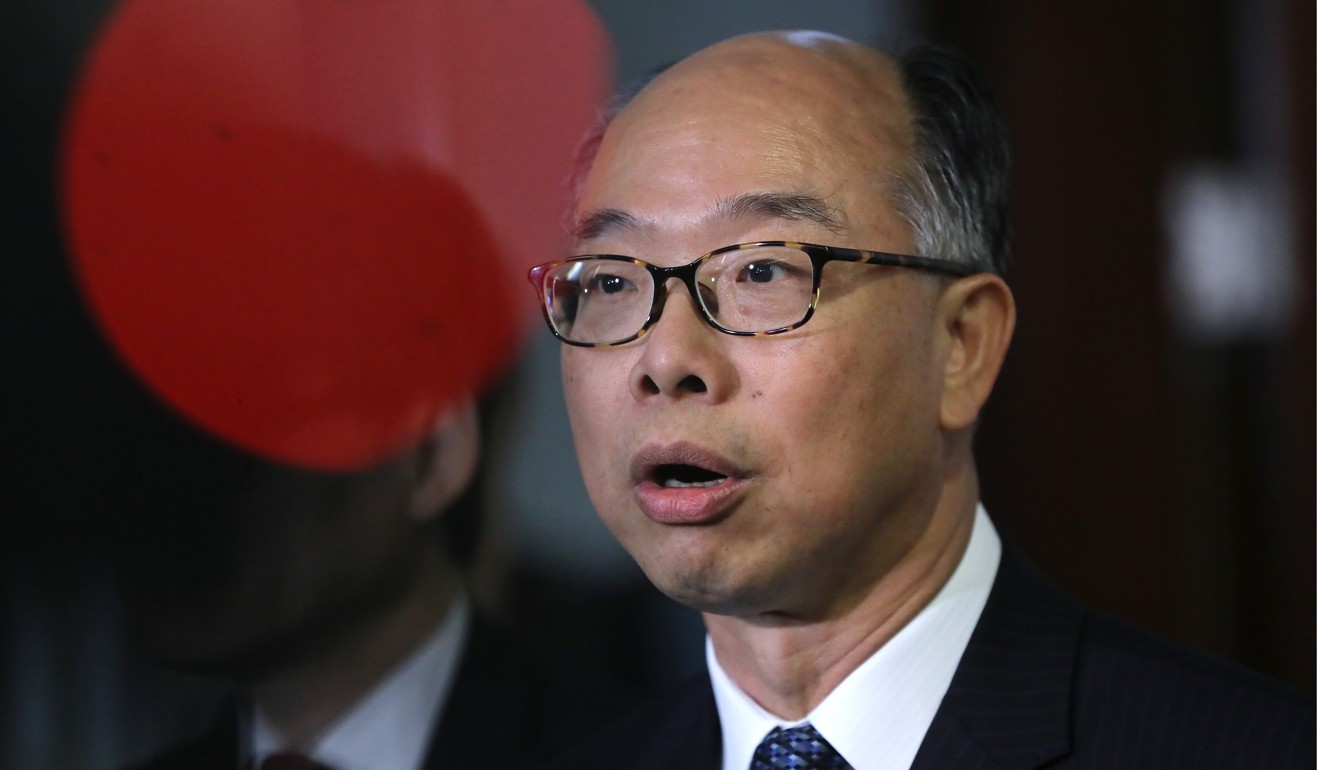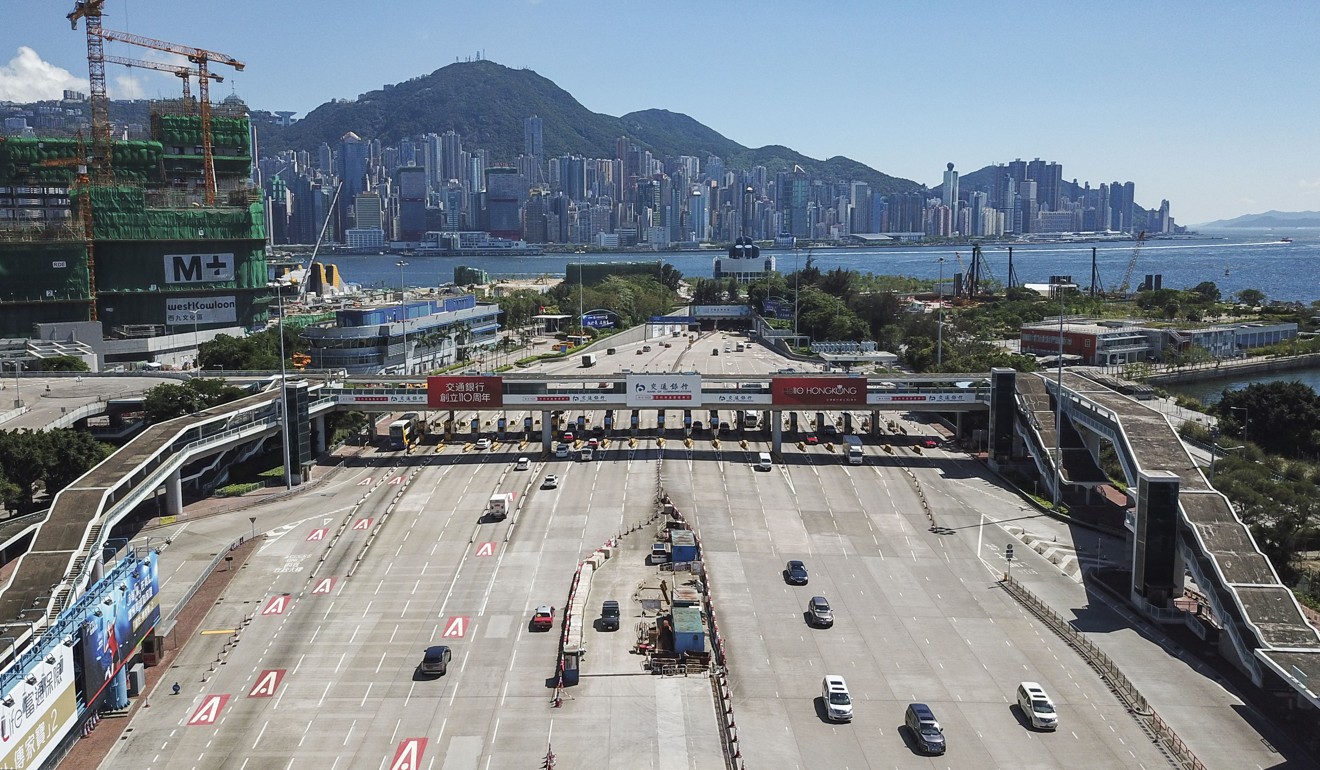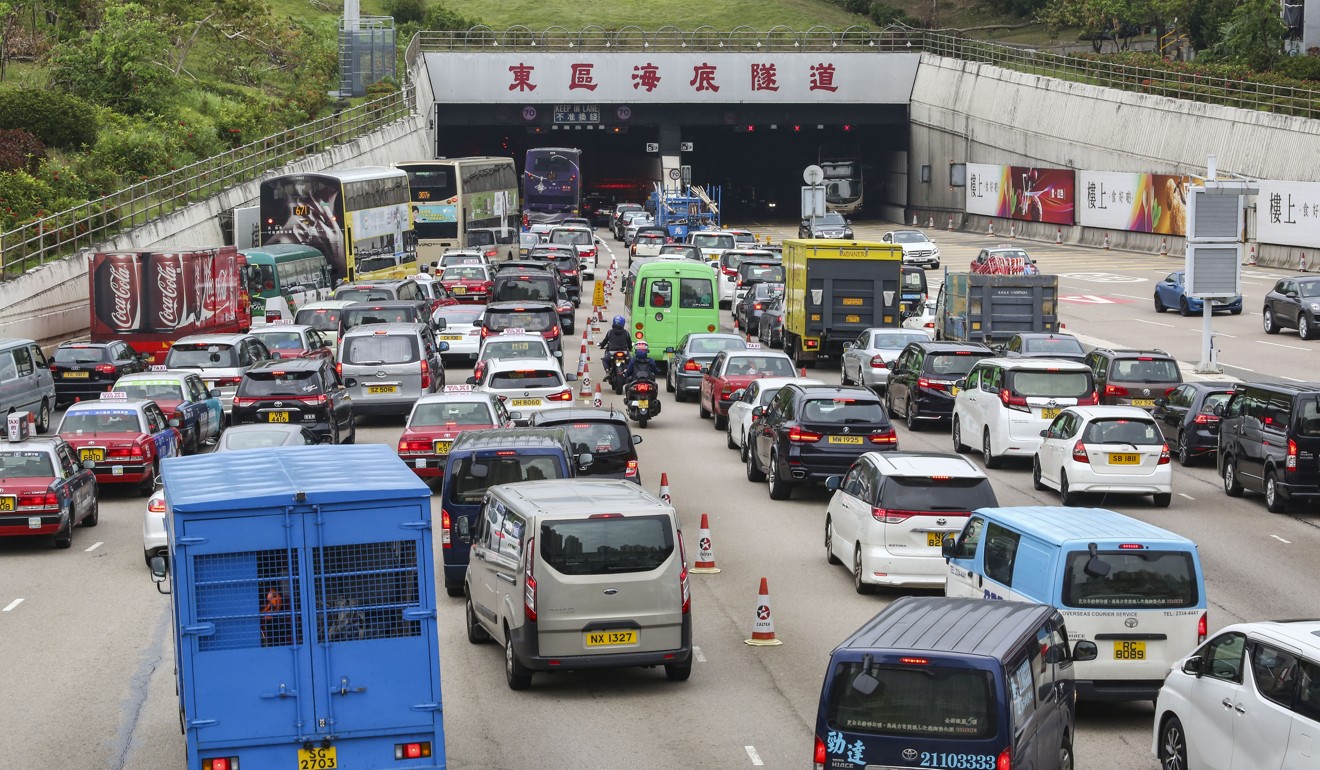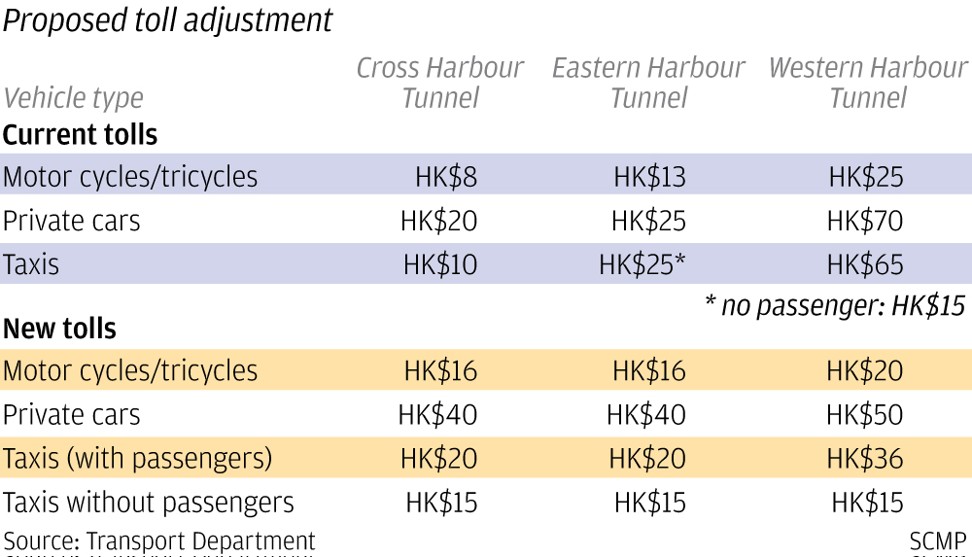
Hong Kong transport chief Frank Chan sticks to plan on proposed changes to tolls for harbour crossings
- Scheme is the best the government can offer to ease long-standing traffic congestion, Chan tells lawmakers
Hong Kong’s transport chief has ruled out further changes to proposed toll increases on two of the three cross-harbour tunnels before 2023, saying the scheme is the best the government can offer to ease long-standing traffic congestion.
Secretary for Transport and Housing Frank Chan Fan stood firm at a Legislative Council transport panel meeting on Friday as lawmakers from both sides of the political divide expressed doubts about the proposal – to raise tolls on the Cross-Harbour Tunnel (CHT) and Eastern Harbour Tunnel (EHT), while lowering them on the Western Harbour Tunnel (WHT).
“This proposal is the ideal one that we have come up with after taking into consideration different options … We believe this can benefit overall society,” he told lawmakers.

The government proposed compensating the western tunnel operator for its losses from the plan until its franchise expired on August 1, 2023, based on vehicle numbers and capped at HK$1.8 billion. The new tolls at the three tunnels were expected to take effect from January 1, 2020.
I won’t change tunnel tolls plan, Lam says
Chan said the proposal had a lot of advantages, including reducing congestion at the two public tunnels while curbing toll rises by the privately run WHT.
According to a government-commissioned study, the plan could effectively push motorists towards the western crossing and reduce traffic during peak hours by between 34 and 42 per cent at the Cross-Harbour Tunnel, and between 10 and 29 per cent at the eastern crossing.

At present, motorists need to wait up to 36 minutes during evening peak hours for crossing the former and 14 minutes at the latter.
“Motorists could save up to 13 minutes of driving time for crossing the harbour tunnels,” Chan said.
The Transport Department’s chief engineer Shea Tin-cheung said: “Other options have their problems. We think the current proposal is the best.”
However, many lawmakers asked whether there was still room to rethink the proposal and make changes.
Cost of daily commute could double as government bids to ease congestion
“I actually don’t agree with some assumptions made in the study … the chief executive once said that there was no room for changes and if the Legco rejected this proposal it would go back to square one. Is it really true that there is no room for making a U-turn?” asked Edward Lau Kwok-fan, of the Democratic Alliance for the Betterment and Progress of Hong Kong.
Michael Luk Chung-hung, of the Federation of Trade Unions, also expressed doubts about the study, asking if the government could put the plan on hold until after the opening of the Central-Wan Chai bypass early next year.

But Chan insisted the deal with the WHT was “hard-earned”, saying any further changes to tolls could only be made after August 2023 when the government took back the western crossing’s franchise.
“This proposal has been made for the overall interests of society … If we go back to the negotiating table with the Western Harbour Tunnel, there is not much time left for renegotiation as its franchise will expire in 2023. The time for us to table the revised proposal is also limited,” he said.
Chan also ruled out buying back the western crossing as it would be costly and financially complex.
How Hong Kong can cut traffic congestion: invest in smart technology
Eventually, two non-binding motions by pan-democrats Kwok Ka-ki and Au Nok-hin were passed by 11 to 9 and 11 to 8 respectively. The former called on the government to defer the proposal until after achieving social and Legco consensus while the latter suggested implementing the toll rises progressively.
However, the government was expected to seek funding from Legco’s Finance Committee in the second quarter of next year.


